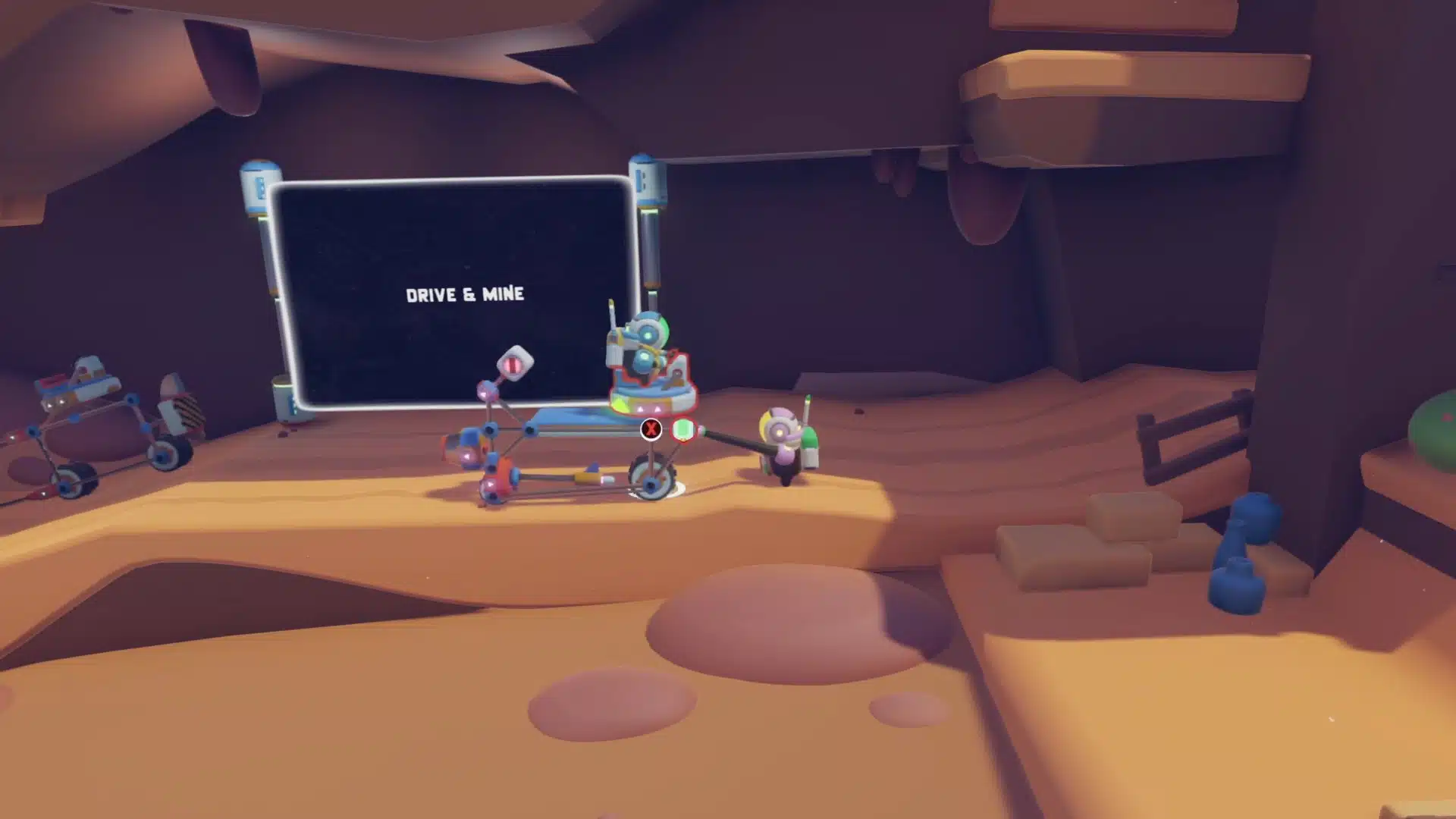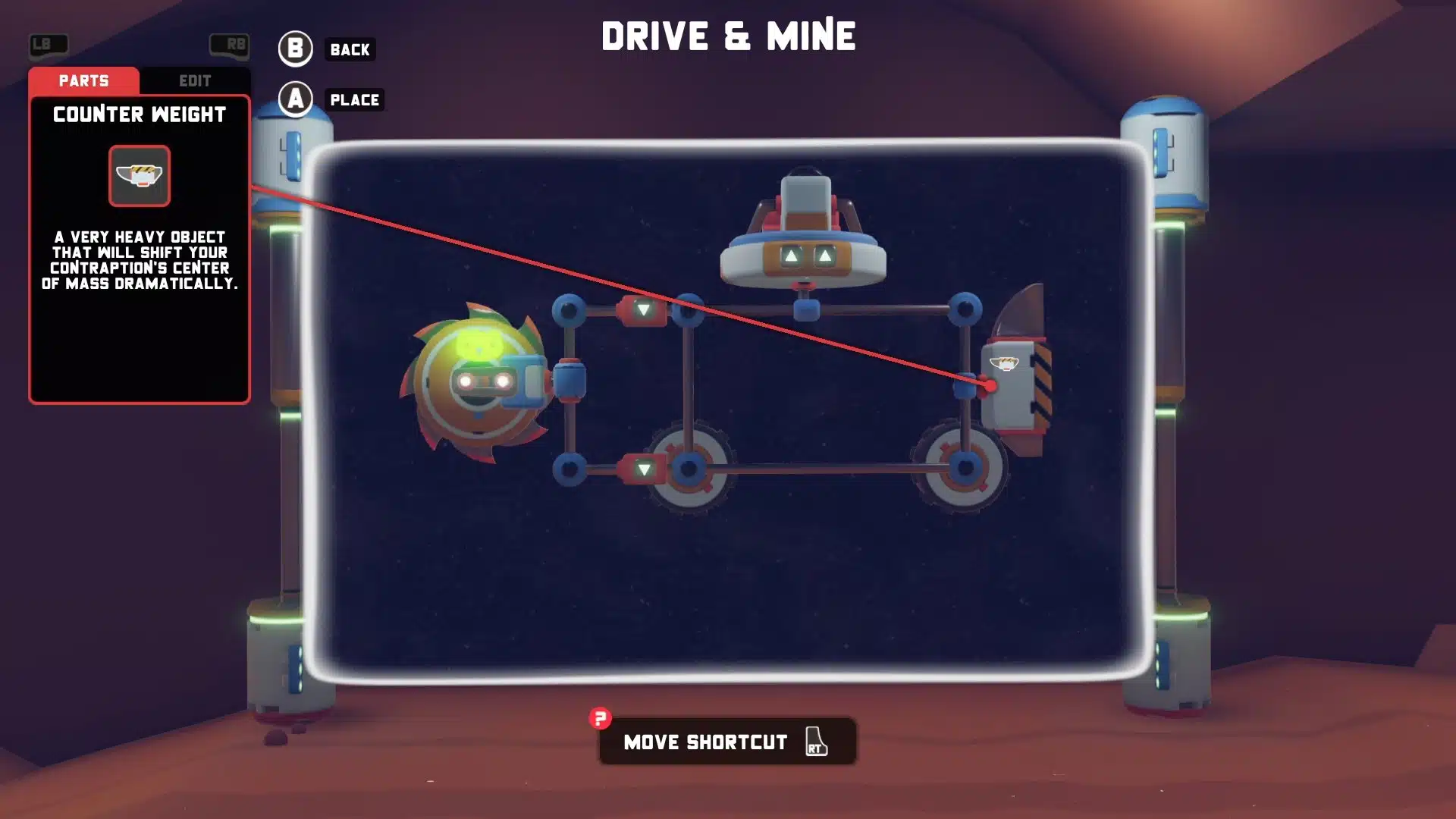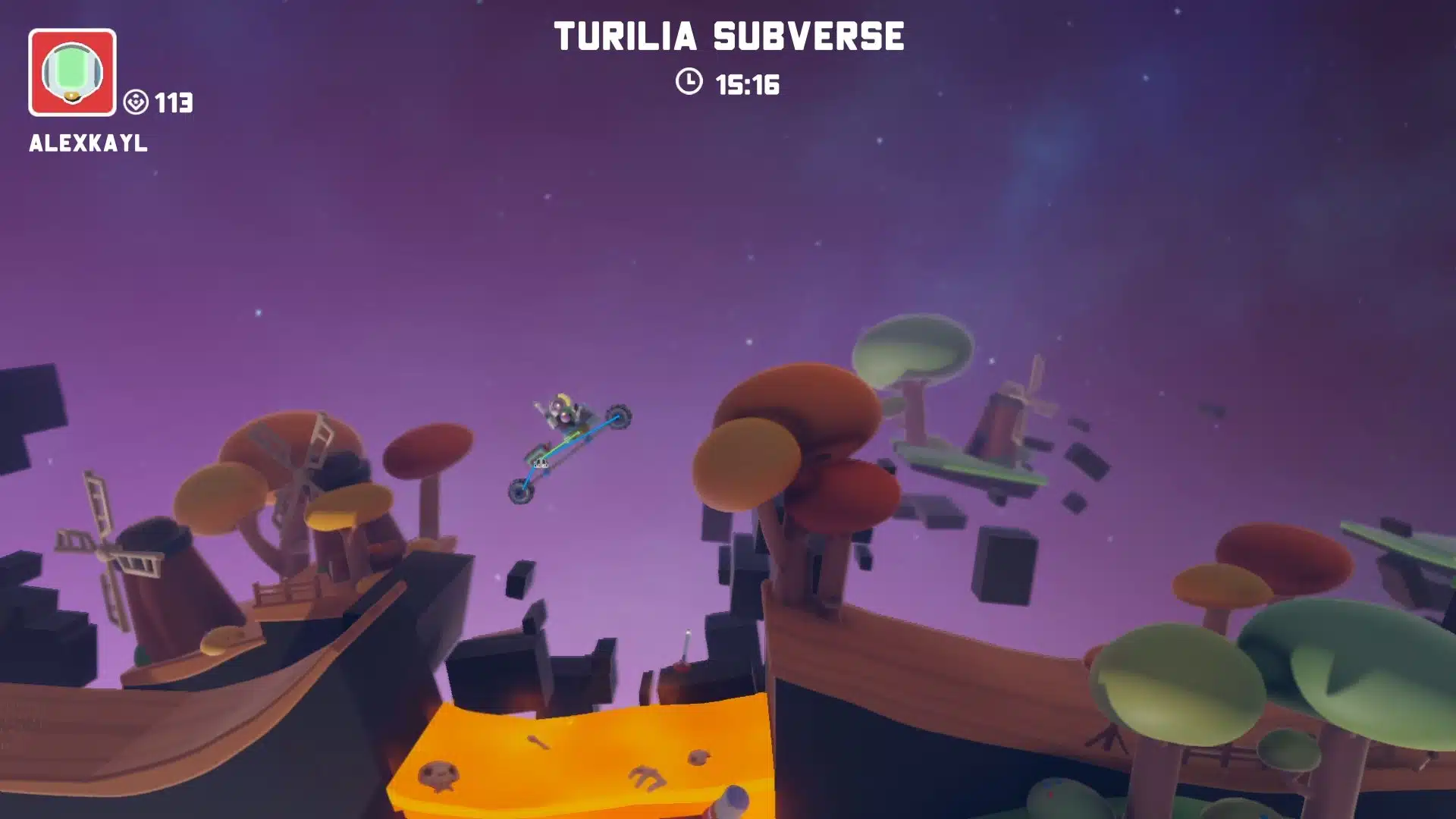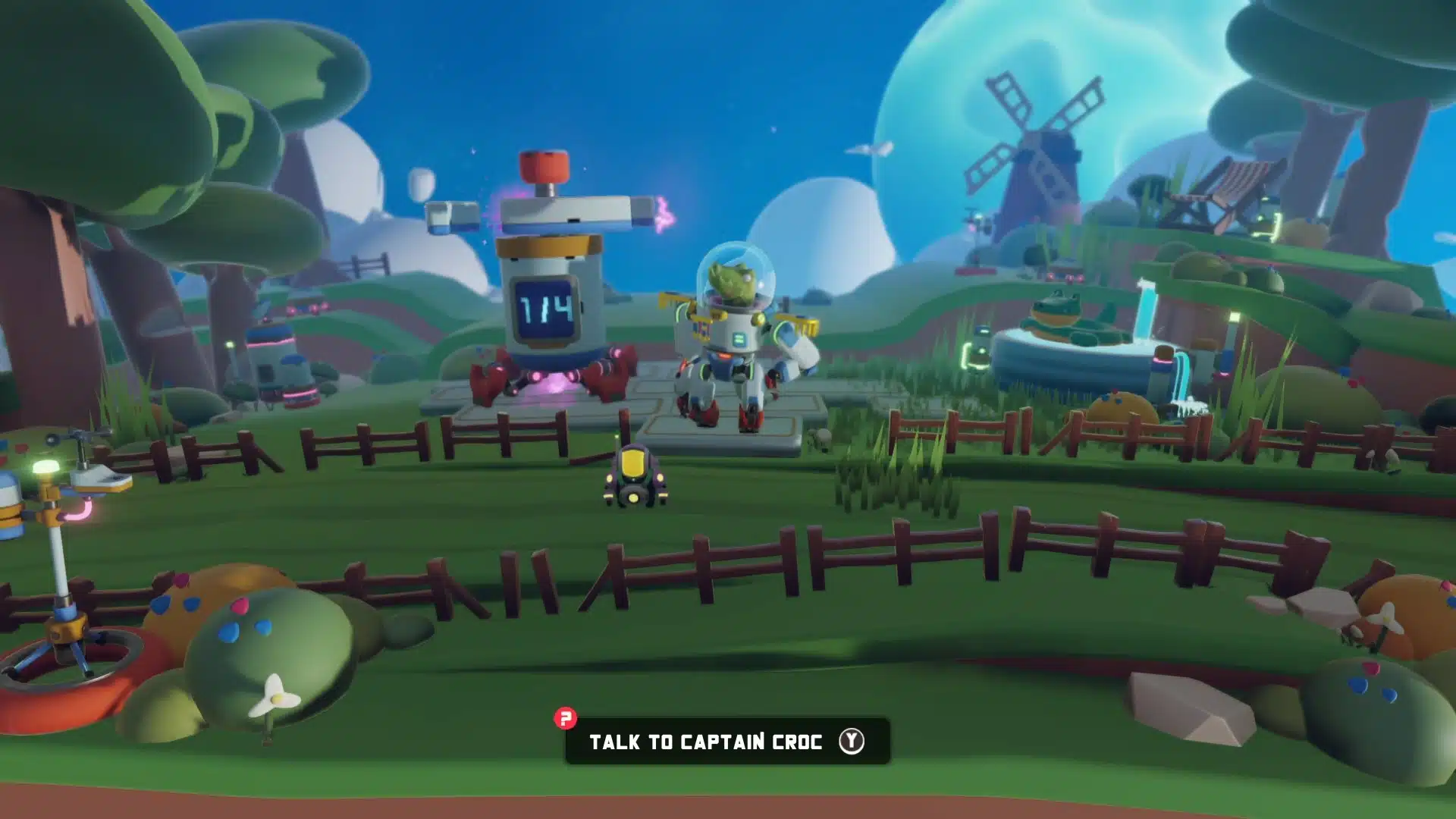Astronimo is a mix of side-scrolling platformer and contraption builder that screams LittleBigPlanet in more than one way. It’s cute but not as immediately accessible as it should be, due to an elongated tutorial that seems never-ending and some design choices that result in clunky controls, hurting your ability to imagine and realize an interesting potential for resourceful inventions.
Contraptions in Space
You control your little astronaut on the starting planet of a few more to explore, having crash-landed and now trying to reunite with the rest of the crew. Easier said than done, because this requires you to use your rubbery physics-based body to explore and execute tasks that are often more challenging and odd than they should be. Having independent control over each of your character’s arms is both a blessing and a curse, as it may expand the possibilities but also ramps up the clunkyness. This results in occasional bouts of uncanny and exaggerated physics, not always enjoyable, especially the frustrating swinging on ropes until you realize the best way to go about it.
Physics is also a double-edged sword when it comes to the world and the connection with the gadgets you build. It’s not uncommon to see your platforms or vehicles clipping with the map, failing to properly follow notions of obstacles and boundaries, often resulting in your character sinking into the ground himself as your latest build turns on its head.

Astronimo is a side-scroller that works in predefined lanes, exactly as LittleBigPlanet. Transition isn’t seamless, as your little astronaut jumps from one to the other, usually three lanes, avoiding obstacles and playing around with depth in concurrency with verticality. It’s not the greatest choice in practice, and it can both be fun and annoying as you zip along in one of your custom thruster-powered bicycles of doom, changing lanes last-second, often bumping into some part of the environment whose lane position wasn’t entirely easy to discern. Some players won’t be too fond on this, but it’s a mechanic they will have to live with if they plan to find their fleet.
While looking for items and ore to mine, something that can be used to spin for character and building cosmetics, you’ll discover these workshops where you can enter the vehicle building part of the game, the other half of Astronimo. This grid-based construction system isn’t terribly complicated at first, but it’s also not very practical as you use the controller to drag parts around and try to fit them all as you hope for. Despite the various tutorials – again, the game tries to ease you in but it still feels like a lot of information is being thrown at you in short succession – there are still questions about actions as crucial as the lack of an instant undo button, which is far different from the existing delete button.

The various rods, wheels, and platforms are paired with things like buttons and connectors, allowing you to create various chain reactions that go from simple to extremely complex, eventually convoluted. The freedom offered by the contraption building system results in some random and weird physics fun, with strange reactions and mechanical issues clashing in ways that can be both unforeseen and entertaining. However, it’s not entirely easy to grasp all the mechanics, certainly not as simple as dragging something from one end to the other as the tutorial suggests – getting things to respond as we want them to can be somewhat confusing, and it’s not unlikely that some players may quickly get to the point where they struggle to understand why something isn’t connecting, and give up on it altogether.
Combining platforming and building is essential, as many challenges involve creating the right kind of platform to reach a ledge, or a vehicle capable of gaining enough momentum as to go over a ramp or loop. Things get harder as you progress, naturally, and there’s this seeming freedom to exploration, as you ping the objectives to learn about their location.
The More Astronauts, the Merrier

Playing Astronimo solo isn’t remarkably interesting, although you can immerse yourself in the main campaign and create some interesting contraptions if you strive for it. But it’s not that exciting going alone, which is why a four-player cooperative mode is the best way to go. Since the game is capable of zooming to extreme distances, it’s not a problem if the crew gets somewhat spread apart; there’s even an option to “bubble” yourself close to the nearest player, saving the effort of walking for some time.
With more players, you can start devising vehicles with more seats capable of carrying the entire crew, resulting in even more complex works and potential chaos. The confusion may not always be equivalent to fun, so there’s that, and you can start some scuffles if you feel like it. But in the end, this is a multiplayer game that isn’t entirely easy to pick up and play, with a fairly steep learning curve that requires your full attention and friends who are up to the task.
Astronimo is a charming game that isn’t exempt of issues and design decisions that aren’t bound to be consensual, from the lane system to the odd dual-arm physics that may complicate things more than they help. The building potential is intriguing, but the system isn’t as intuitive as it could be, and the more complex vehicles using claws and several seats require a lot more time than you might think at first to function properly. The world editor ramps up the possibilities but also does so with the complexity, and unless you are really into this type of gameplay and visual style – the latter fails to reach the appeal of LittleBigPlanet’s Sackboy and buddies – it may not be your cup of tea. Save some time, stock up on patience and bring a few like-minded friends and you may have some fun with these building antics in space.
Score: 7.5/10
Pros:
- A throwback to LittleBigPlanet platformer gameplay
- Interesting vehicle building system with potential for some crazy works
- Cooperative mode – up to four players – is the best way to enjoy it
Cons:
- Building can be less intuitive than it should be for the more complex works
- Lane gameplay isn’t very appealing
- Physics-based controls can be hit and miss
Astronimo review code was provided by the publisher. You can read MP1st’s review and scoring policy right here.
